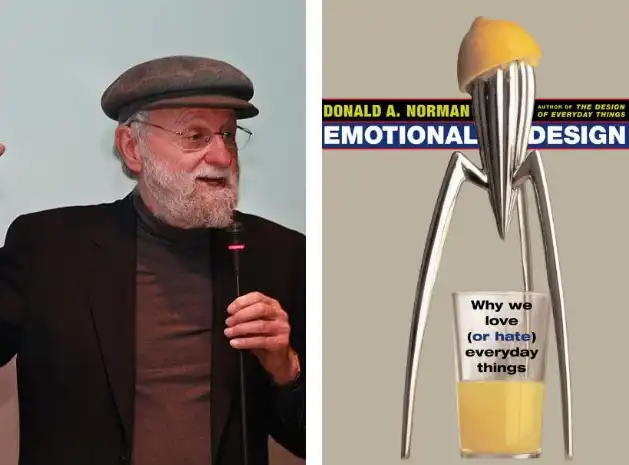Ludovico Sforza, the Duke of Milan, asked Leonardo da Vinci to design his palace kitchen. But before the architect and painter proceeded with the work, for a few days, he observed the work of cooks and kitchen staff to be able to address their needs. This makes you think about the origins of User Experience (UX).
As in Leonardo's case, when designing UX, it is essential to understand that you need to work for the needs of a specific user.
UX and user needs
“In the 1980s and 1990s, people started to increasingly understand that often human-computer interactions are not human-machine interactions but interactions between different individuals and a machine. And that the machine changes the contexts.
It was not necessarily laboratory hardware: there were computers in the homes and offices with different user needs,” Agnieszka Szóstek, Ph.D., experience designer, founder of UXPlus and a lecturer at SWPS University, told The Story Journal.
"Business was mainly about usability back then. But the beginning of the 21st century is a period when the term User Experience first entered the academic world. The concept tells us that apart from usability, emotions are also important. I must admit that when I was already close to the academic circles, everybody approached the subject with a pinch of salt. And then Don Norman published the book "Emotional Design" (2004) which was an important prelude to the understanding of UX," adds the expert.
Birth of UX. Creating products in accordance with human logic
The traditionally understood UX dates back to the 1970s. "There are two approaches to User Experience: historical and technological. They are somehow intertwined but different. The former approach is related to the emergence of computers, initiated in the 1940s. With time, the design of the first user interfaces began. Although the point when anyone first thought about User-System Interaction (USI), today is known as User Experience, was the appearance of the first personal computer, a PC," explains Agnieszka Szóstek.

It turned out then that to be able to use the PC; it should be designed to reflect human, not machine, logic. These were the 1970s when cognitive psychology and engineering fields were slowly combined. It was then that the first beginnings of the solutions that reflected the human way of thinking and acting appeared.
The human aspect of UX is extremely important, which is illustrated by the Leonardo example mentioned at the beginning. Although his solutions were ingenious, da Vinci's designs included a belt conveyor and fire sprinklers, the workers complained about the belt moving too fast and the sprinklers activating without reason and destroying a food batch. Although Leonardo closely observed his users, not everything worked as it should have.
Already in the first phase of UX formation, attempts were made to avoid such failures. Agnieszka Szóstek cites that the specialists conducted research with the participation of ordinary people who tested computer-related solutions. It was checked how the research subjects cope with individual tasks and to what extent they are frustrated with them.
How important is the user? Changes in the approach to UX
Over time, there have been significant changes. In the 1980s and 1990s, UX shaping was greatly influenced by Jakob Nielsen, nicknamed the 'dinosaur of usability,' and Don Norman, who worked for Apple Inc. (Apple Computer Inc then.) from 1993 to 1997. In 1988, the two founded Nielsen Norman Group, a consulting company focusing on interfaces and user experience.
UX according to Jakob Nielsen: a touch keyboard as a breakthrough product

Jakob Nielsen believes that one of the pioneers of UX was Bell Labs, a research and implementation division of the American-French telecom corporation Alcatel-Lucent, established in 1925.
Only 20 years later, Bell Labs hired John E. Karlin, a psychologist whose task was to help design telephone systems. That was an unprecedented idea at the time. Jakob Nielsen argues that Bell Labs was active in the field of UX already in the 1950s, boasting a touch keyboard that we continue to use today.
Let us add that the usability veteran is famous for being extremely demanding regarding UX. In 2017 he wrote that the general quality of user experience, both on the web and generally in relation to computers, is less than 10 percent of what it should be. All this is due to the complexity that is still too high.
Agnieszka Szóstek points out that the second phase of UX development took place in the late 1980s and 1990s.
“This is the era of Jakob Nielsen and Don Norman when designers became increasingly important. Earlier, mainly psychologists defined the rules to be implemented,” Szóstek comments.
The 1980s and 1990s denoted the evolution of UX. For a long time, only testing the ready-made solutions mattered. Later, it was argued that the persons dedicated to interface ergonomics should be involved earlier in the design process, and it would be good to do some research. The knowledge of sociology, among others, was employed then.
The task of the designers was to ensure that the designs looked decent but, from today’s perspective, surely not pretty. According to the expert, those were the times when the focus on the ergonomics of interfaces was already greater. It was noticed then that not only simplicity matters but also providing the users with some sort of satisfactory experience. And this trend continues to this day.

Changes in the perception of the UX concept
Don Norman claims that UX is to be understood as everything that accompanies us when dealing with a product. He gives the example of the 1990s when the human-computer interactions included the moments of hardware discovery in a store and tiresome cramming it into the car because your PC had been packaged into a box that was too large, and then unpacking the new toy at home only to find out that you have absolutely no idea how to assemble it.
However, Agnieszka Szóstek indicates that the design field is relatively young, affecting the understanding of UX.
“Industrial design dates back to the beginning of the 20th century. While design and ergonomic thinking date back to the 1950s. But remember that these were mainly analog, not digital solutions. The 1990s, in turn, is the period of the Internet becoming increasingly widespread.
In fact, not even 30 years have passed since the field of UX was established as we understand it today, associated with digital design and the creation of websites or mobile applications. UX is constantly evolving, and so are the terms and definitions,” says the expert.
UX Designer: challenges
In 2020, the rapidly evolving technology affected User Experience development and changed the designer’s role. Being a Renaissance man like Leonardo da Vinci is no longer that important. On the contrary, we notice a growing division into specializations.
UX Writer is gaining importance, responsible for preparing the content for the user. Also, remember the specialists in charge of information architecture (IA) which is about the clearest arrangement of navigation and text content.

SEO/UX Designer designs inbound websites, i.e., websites that allow you to acquire customers by attracting them through content marketing and not through active sales.
Security IT/UX Designers can combine the security requirements of product users with User Experience. This reduces your dissatisfaction resulting from complicated and multi-stage registration, login, and online payment procedures, and also from using the services and products where identity confirmation is required.
AI-based product UX and the future of design
The spread of artificial intelligence and machine learning, the progress in robotics, and the emergence of quantum computing caused users to come into contact with solutions based on complex technologies more and more often.
Weird acting chatbots? Underdeveloped voice interfaces? Diminishing User Experience during the use of Siri or Alexa? Everything that is not working (or is malfunctioning, in the user’s opinion) is an area for development for a UX Designer.
A contemporary UX Designer acts as a chatbot, voice interface, and bot interface designer. They are required to know the technology and user needs and behavior.

Remember how important cognitive science, the scientific study of mental processes and information processing, is to UX design. It enables the designers to analyze a behavioral pattern and transfer it onto machine behavior.
Research in the field of artificial intelligence is possible with the cognitive knowledge of learning, cognitive processes (and their substrates), and the environment. This is cognitive science combining life science, humanities, and social studies, enabling you to gain valuable knowledge.
So, you see that today’s experience designers should broaden their horizons. UX is becoming increasingly linked to the business. Consequently, it is essential to understand the business side. Soft skills are also important.
Sustainable UX
Currently, the technological and business perspectives are gradually overlapping. The design of services adapts to business. Agnieszka Szóstek explains that we are at the point where business, i.e., Customer Experience and User Experience, are slowly coming together.
Therefore, you need to ask yourself the question about the future of UX. Today, more and more people are becoming convinced that companies are not only about making money. Higher goals are increasingly important, often related to a specific ideology. Businesses can improve their sales of products or services by highlighting certain values and ideas. Usually, this is only a cold calculation, but sometimes it is a sincere desire to change the world for the better.

“Today, there is more and more talk about customer focus being a narrow view of what we design. The solutions we design have an impact on the world around us. Consequently, when we create designs that, e.g., stimulate consumerism and ultimately have an adverse effect on the climate, for instance, then do we really do good?” asks Agnieszka Szóstek, and then adds:
“Our awareness is much greater now. We know how we affect the planet and environment, which inevitably more and more influences the design process. I think that it will be the next step in the evolution of UX. We got used to things working well (and we expect that they will function even better) and giving pleasure, but on the other hand, we feel that we would like to use solutions that are clever for the people, the world, and the environment,” sums up our interlocutor.
Cover photo: Adrian Pingstone / commons.wikimedia.org






